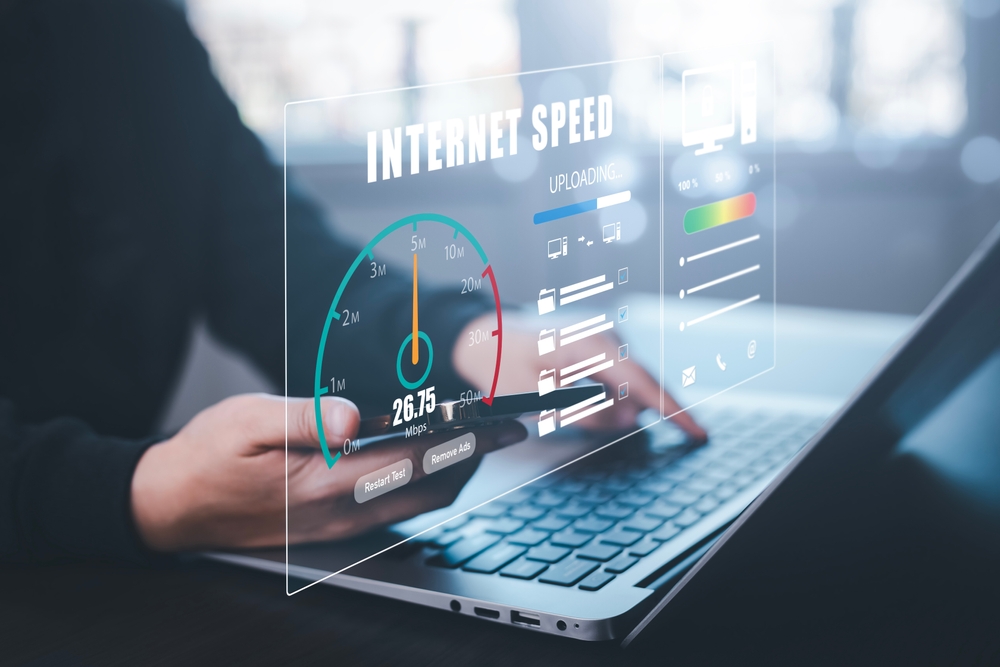Blog

The Evolution of Phone Internet Speeds
The evolution of phone internet speeds from 3G to 5G has been a technological marvel. It represents a journey transforming how we connect, communicate, and consume data on our mobile devices. As we delve into this remarkable transition, it becomes clear that each generation of mobile network technology has played a crucial role in shaping our modern digital landscape.
The 3G Era: Birth of Mobile Internet
The introduction of 3G, the third generation of mobile networks, marked a significant milestone in telecommunications. It brought mobile internet to the masses and enabled basic web browsing and email access on mobile devices. The data speeds offered by 3G networks were a game-changer compared to its predecessor, 2G, as they provided data rates ranging from 200 kbps to several Mbps. This made sending and receiving multimedia content possible, opening the doors to mobile applications and streaming services.
3G was the foundation upon which our modern smartphone ecosystem was built. It laid the groundwork for popular apps, video calls, and social media, transforming how we interacted with our phones. However, as data-hungry applications and services continued to evolve, it became apparent that the capabilities of 3G networks were increasingly insufficient.
The 4G Revolution: High-Speed Data
The arrival of 4G, or the fourth generation of mobile networks, revolutionized mobile data speeds. With peak download speeds of up to 1 Gbps, 4G networks were a significant leap forward from their 3G predecessors. This technological leap empowered us to stream high-definition videos, enjoy seamless online gaming, and make high-quality video calls.
4G networks offered higher data speeds, improved reliability, and lower latency. These advancements led to the explosive growth of app-based services, the rise of online video streaming platforms, and the proliferation of the Internet of Things (IoT) devices. Mobile devices have become integral to our daily lives, connecting us to the world in unimaginable ways.
However, as the demands for data and connectivity continued to skyrocket, 4G networks began to show signs of strain. Network congestion became a common issue in densely populated areas, and the need for even faster speeds and reduced latency became apparent.
The 5G Era: The Future of Connectivity
The transition from 4G to 5G represents a quantum leap in mobile network technology, promising to deliver data speeds of up to 20 Gbps, virtually eliminating network congestion, and reducing latency to just a few milliseconds, making 1 gig of internet connectivity a reality for consumers and businesses. This opens the door to various applications, including augmented reality (AR), virtual reality (VR), autonomous vehicles, and remote surgery.
The potential of 5G goes beyond just speed; it has the power to reshape industries and how we live. The Internet of Things (IoT) is set to explode, connecting everything from smart homes to smart cities. Self-driving cars will become a reality, benefiting from low-latency communication. Healthcare will be revolutionized with remote monitoring and telemedicine. The entertainment industry will offer immersive experiences like never before.
Moreover, 5G will pave the way for more energy-efficient networks, reducing the carbon footprint of mobile communications. This innovation aligns with global efforts to combat climate change and create a more sustainable future.
However, the rollout of 5G comes with its challenges, including infrastructure development, security concerns, and regulatory considerations. Ensuring widespread coverage and addressing these issues will be crucial in fully realizing the potential of 5G technology.
In conclusion, the evolution of phone internet speeds from 3G to 5G is a testament to human innovation and our insatiable thirst for connectivity. Each generation of mobile network technology has improved data speeds and transformed how we live, work, and play. With 5G on the horizon, the future promises to be more connected, efficient, and exciting than ever, ushering in a new era of technological possibilities.



Comments